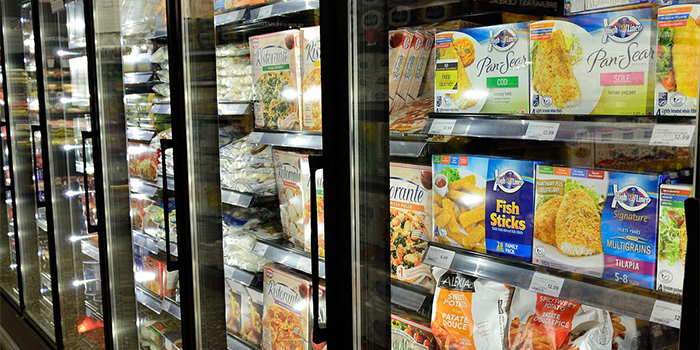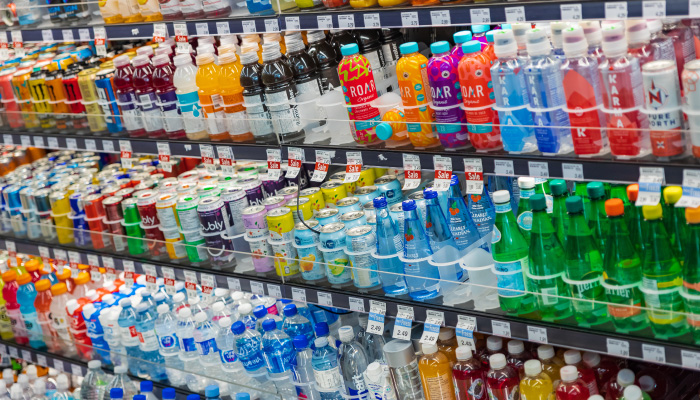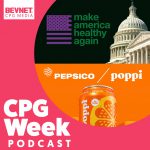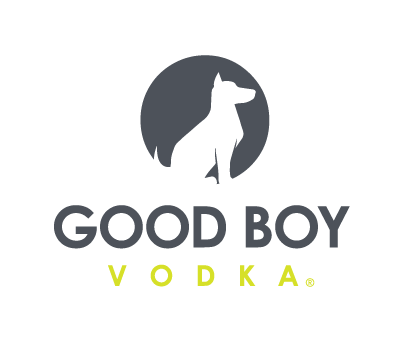Kroger/Albertsons Merger: “An Existential Question” Around Effects on Brands

Kroger has announced a definitive agreement on a $24.6 billion deal to acquire Albertsons, bringing the country’s two largest grocery chains together.
Per approval from regulators, the completed deal – which is expected to close in early 2024 – is set to spark major consolidation within the grocery industry, as the combined companies boast a total customer base of approximately 85 million households and roughly $210 billion in annual revenue.
The deal signals the single biggest shift in the grocery landscape for emerging and entrepreneurial brands since Amazon purchased Whole Foods in 2017. Its announcement has left many members of the industry wondering about the long term ramifications for brands and shoppers.
“I think the question you have to ask, based on recent evidence [is], ‘what is the benefit to consumers,’” CPG advisor and entrepreneur Errol Schweizer. “But I think a broader question, which is really an existential question…is ‘how good this is for suppliers?'”
The Players
Cincinnati-based Kroger – the biggest U.S. grocery retailer with over 27,000 stores across multiple banners, including Harris Teeter, Fred Meyer, Ralph’s, King Soopers and others, employing around 420,000 people – will buy all outstanding shares of Albertsons for an estimated cost of $34.10 per share. Albertsons, based in Boise, Idaho, will also pay a special cash dividend of up to $4 billion to its shareholders. Albertson’s has more than 2,200 stores in 34 states, and employs nearly 300,000 people in stores like Shaw’s, Safeway, and Jewel Osco.
Kroger’s chairman and CEO Rodney McMullen will continue in those roles at the combined company, as will its chief financial officer, Gary Millerchip.
“We are bringing together two purpose-driven organizations to deliver superior value to customers, associates, communities and shareholders,” said McMullen in a release. “Albertsons Cos. brings a complementary footprint and operates in several parts of the country with very few or no Kroger stores. This merger advances our commitment to build a more equitable and sustainable food system by expanding our footprint into new geographies to serve more of America with fresh and affordable food and accelerates our position as a more compelling alternative to larger and non-union competitors.”
As cited by McMullen, the merger will allow Kroger to accelerate its go-to-market strategy on several fronts, including expanding its range of fresh products and boost penetration of those items, according to a press release. In the face of record inflation, the combined companies will be positioned to offer a private label portfolio that spans 34,000 products across categories. Improving the customer experience through personalized recommendations and data-driven insights will also be a focus, as well as “shared operational learnings across both large and small store formats, a more extensive and efficient distribution network of customer fulfillment facilities and capabilities, and an expanded pickup footprint.”
Kroger has also committed to reinvest approximately $500 million of cost savings from synergies to reduce prices for customers. An incremental $1.3 billion will also be invested into Albertsons stores to enhance the customer experience.
In order to earn FTC approval, the transaction will also include store divestitures for both retailers. Albertsons is set to establish a subsidiary called SpinCo – to be composed of between 100 to 375 stores, as determined by both companies – which will be spun-off to Albertsons shareholders immediately prior to merger closing and operate as a standalone public company. That group would “create a new, agile competitor with quality stores, experienced management, operational flexibility, a strong balance sheet, and focused allocation of capital and resources,” according to the release, and allow associates a way to continue working with the company.
Upon completion, the merger is projected to achieve approximately $1 billion of annual run-rate synergies net of divestitures within the first four years, and around 50% within the first 24 months. Those are expected to come mainly from “improved sourcing, optimization of manufacturing and distribution networks, and technology investment amplification opportunities,” per a press release.

Reshaping the Retail Landscape
John Maggiore, the founder of natural foods broker Maggiore’s Sales & Marketing, said he was optimistic that with Kroger as the parent company the merger will benefit smaller brands. Albertsons, he said, has often “been tough” to break into for startup food and beverages while Kroger in recent years has broadened its assortment and created programs to pilot new products in select regions. If Kroger applies that same approach to the Albertsons banners, it could create more opportunities for small companies to gain placements.
However, usually with mergers such as this, some category manager and retail buyer positions are eliminated through redundancies. A consolidated buying pool typically benefits larger brands that can be rolled out in thousands of stores at once, Schweizer said, and already have deep relationships with retailers.
Schweizer added he was concerned about the potential negative impact of the merger on brand expenses such as slotting fees, promotions, merchandising services and trade allowances. A lack of competition means less checks and balances on what these charges look like, potentially rising to a scale unattainable for emerging brands.
Bob Burke, principal at Natural Products Consulting, said this consolidation within the grocery sector will give Kroger a much stronger bargaining position with vendors and suppliers and could make it harder for small brands looking to enter the channel to break through. While the merger won’t be completed until at least 2024, “once that happens, it remains to be seen how much centralization” happens.
“You have to imagine that things like slotting fees and ad programs and participating in 8451 – Kroger’s data consumer insights [platform] – all that’s going to be going up, just based on the scale of the concentration,” Burke said.
He pointed to recent criticisms of Whole Foods providing fewer opportunities for local suppliers in its various regions in recent years, raising the question of whether or not earlier stage companies “trying to crack Kroger or Albertsons” could face more uniform sets. However, Ken Sadowsky, senior beverage advisor at Verlinvest and executive director of the Northeast Independent Distributors Association, noted that major retailers have embraced fresh innovation over recent years, as the bulk of discovery still happens in-store and even as consumers increasingly learn about new products online many prefer to make trial purchases in-person.
According to Maggiore, Kroger’s leadership could also help lift up some of Albertsons’ struggling grocery chains, such as Shaws in the Northeast, Jewel in Chicago and ACME in Philadelphia. In the case of Shaws, the banner has closed several dozen stores over the past 15 years, but Kroger – which currently has no presence in the Northeast – will have incentive to support and expand the chain as a key player in a new region.
“Both Albertsons and Safeway have struggled in the last 10 years,” he said. “If anything, Kroger being involved will mean a more buttoned down and organized approach that will help divisions.”
Kroger, Schweizer said, has been able to deliver execution better than Albertsons, in part due to its 15 year background with centralized buying, a partnership with data-based marketing firm Dunnhumby that eventually evolved into 84.51, and early investments into digital personalization and omni-channel merchandising. While Albertsons’ cost to entry are similar to Kroger’s, he said, execution has been lacking. With Kroger as the parent company, there’s the potential for brands to see more consistency across banners.
Danny Stepper, CEO and co-founder of beverage industry incubator L.A. Libations, said that if the deal goes through the impact will definitely be felt in Southern California, a hub for innovation in food and beverage that tends to be a starting point for many emerging brands.
The hope for those brands, he noted, is that Kroger will see the advantage in segmenting the businesses to better reach consumers.
“Most brands, when they really think about it and are being honest with themselves, don’t want to be in 5,000 Krogers,” said Stepper. “For a brand that’s trying to go really big really fast it can be a big benefit, but we’ve all learned that those success stories are few and far between.”

Impacts For Consumers & Labor
The deal comes in the middle of a unique financial climate, Schweizer pointed out, with a recession looming, and producers facing increased inflationary and supply chain pressures. While consumers have had to pay the price of higher grocery bills, he noted, retailers have benefited.
“The concentration in the retail market has enabled price inflation, where, for the most part, large grocery chains have marked up retail prices above and beyond the cost increases,” Schweizer said. “The grocery industry is ground zero for inflation. And we’ve seen much of that inflation happen at these large chains.”
If prices rise because of the combined buying power of the two entities, shoppers will have to tighten their budgets even more. The result is that categories of goods such as organic, regeneratively farmed, or Non-GMO may see losses as consumers are forced to turn to less sustainable options, which typically have lower prices, in order to keep the grocery expenses down.
“[The industry passes] these price increases to the consumer who is ultimately left holding the bag – to the point now where consumer behavior is being radically transformed because people can afford to eat the way they would like to,” Schweizer said
Sadowsky said he believed the merger was “bad for consumers [and] bad for employment,” and that it is likely that if Kroger is looking to create efficiencies it will lead to job cuts across the various banners, particularly in those markets like Southern California where the two companies’ stores compete over a large share of the grocery sector.
“I just think that in those marketplaces where there’s a lot of population, consumers are going to suffer,” Sadowsky said, adding that he thinks Kroger will have more control over pricing.
News of the merger also raised concerns about labor, with the combined entity set to have over 700,000 employees nationwide. Beyond management and buyer positions, floor staff may also be affected, and unions representing some of those workers would now be tasked with negotiating with a much larger corporation.
In a press release, Wendell Young IV, president of UFCW Local 1776, which represents about 3,500 workers at both Kroger and Albertsons stores, said “It is imperative that our members know that their contracts will remain in effect throughout this process and that they understand we will continue to fight for their rights. We have already begun working with our International Union and UFCW Locals throughout the country to assess the potential impact and develop a strategy in response to this announcement.”
Possible Financial and FTC Hurdles
Maggiore said he expected the Federal Trade Commission (FTC) will require divestments in some markets where both companies compete. He noted that Kroger and Albertsons are currently the head-to-head number one and two grocery chains in four areas – Seattle, Southern California, Denver and Portland, Oregon – and the expected close date of early 2024 suggests Kroger is preparing for a long review process.
However, he was skeptical that the deal would hurt consumers or lead to price fixing, as nationwide Walmart will still be a larger grocery seller than both companies combined, while chains such as Target and Costco will continue to provide stiff competition. The deal will give Kroger a presence in 48 states plus Washington, D.C., leaving just Hawaii and New York left to enter.
“It should be a windfall with more topline business coming in and it should help the overhead,” Maggiore said.
Schweizer, however, is less optimistic of the impact on pricing, but notes that he too doesn’t see an FTC issue, albeit because he feels that antitrust laws in grocery haven’t “been enforced since the Sixties.”



















